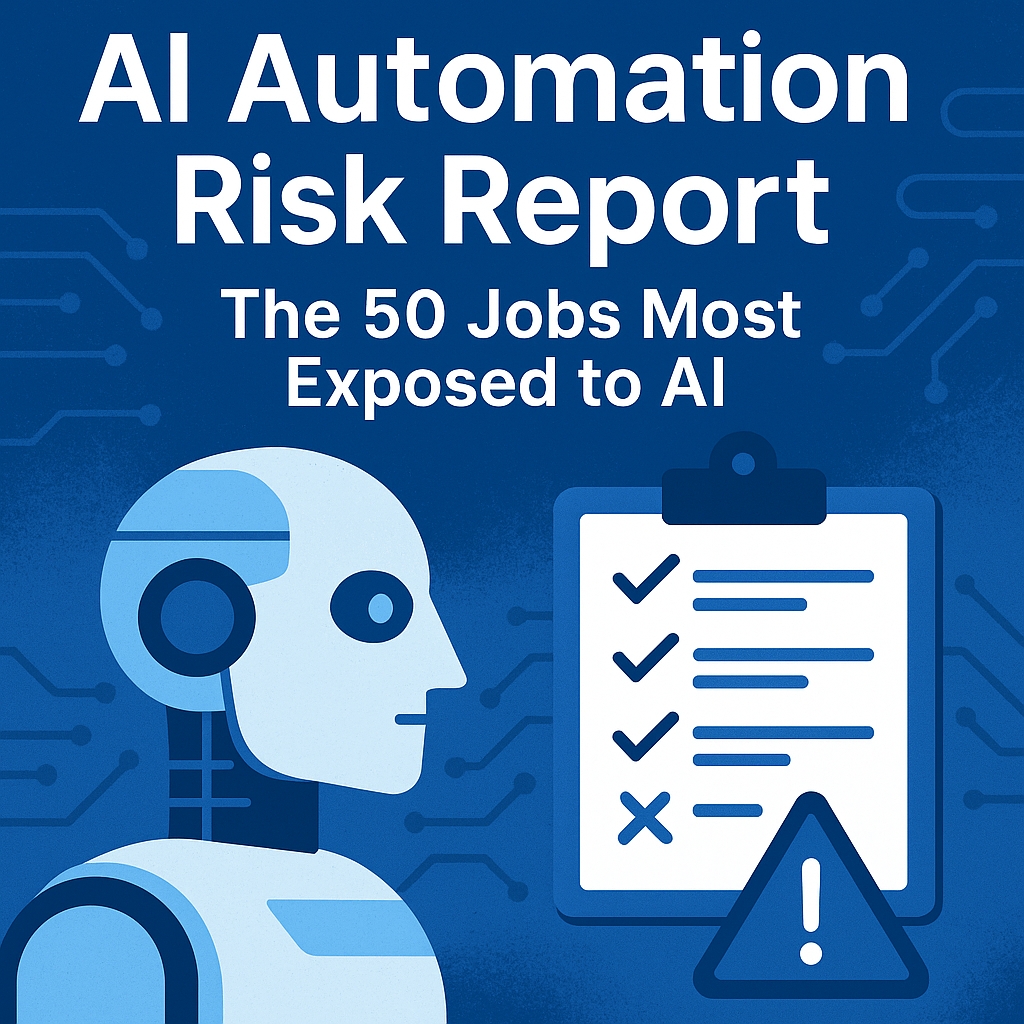HERRIMAN, Utah – A new analysis from EDsmart finds that a concentrated cluster of U.S. occupations—mostly administrative, clerical, and data-processing roles—face dramatically higher exposure to AI automation than the rest of the workforce. Across 784 occupations analyzed, the top 50 high-risk jobs show 86.3% average exposure, nearly 2.9× higher than the average job nationwide.
The most vulnerable occupation? Telemarketers, with 96.25% of job tasks that can be performed by AI systems—meaning nearly all daily activities in the role could be automated using current or near-future technology.
“The next wave of AI disruption won’t target people — it will target patterns,” said Dr. Amanda Main, Chief Innovation Officer at the University of Central Florida College of Business. “Jobs built on repetition and predictable logic are standing on the fault line.”
Office and Administrative Jobs at Highest Risk
EDsmart’s analysis found a striking concentration of risk in routine white-collar work:
-
54% of the top 50 high-risk jobs are office and administrative support roles
-
These 50 jobs represent only 6.4% of all occupations but account for the highest exposure levels
-
Exposure levels among the top 50 range from 77.67% to 96.25%, meaning every occupation in this group exceeds the “very high risk” threshold
Examples of highly exposed jobs include:
-
Order Clerks (95.53%)
-
Insurance Claims Processing Clerks (95.19%)
-
Bookkeeping/Accounting Clerks (95.17%)
-
Payroll and Timekeeping Clerks (94.09%)
-
Medical Records Specialists (93.53%)
Automation Timeline: Disruption Expected Within 2–5 Years
While AI models are already capable of performing 73–96% of tasks in these occupations, organizational adoption historically lags technology by 2–5 years.
Peak displacement is expected between 2027 and 2035 as companies begin integrating AI into administrative workflows at scale.
Ravi Parikh, CFO of Parikh Financial, emphasized the urgency:
“Accounts clerks have the most vulnerable jobs. In 2 to 5 years, I see almost all their duties automated, with humans reduced to exception handling within the decade.”
Not All High-Risk Jobs Are Declining
EDsmart’s model shows an important nuance—the “augmentation paradox.” Some high-exposure occupations are actually growing, because AI tools enhance productivity rather than replace workers.
For example:
-
Data Scientists – 82.28% exposure but projected 33.5% job growth
-
Software Developers – 52.11% exposure and 15.8% growth
High exposure doesn’t guarantee job loss—it depends on whether the role requires human judgment, creativity, or interpersonal skills.
What Workers Should Do Now
EDsmart recommends a three-stage transition roadmap for workers in high-risk fields:
-
Now (0–2 Years): Build AI fluency and understand how AI tools affect your day-to-day responsibilities
-
Next (2–5 Years): Develop transferable skills such as communication, critical thinking, and problem-solving
-
Future (5+ Years): Begin transitioning into lower-risk or AI-augmented roles (e.g., data analyst, operations coordinator, customer experience roles requiring interpersonal expertise)
Policy Recommendations
To avoid large-scale displacement, the report calls for:
-
Government-funded reskilling programs
-
Employer incentives to upskill existing workers
-
Expanded safety nets during career transitions
-
Regional workforce support in areas with heavy administrative employment
-
Education reforms that prioritize durable human skills
About the Report
The AI Automation Risk Report: The 50 Jobs Most Exposed to AI uses task-level automation data from the Wharton Budget Model (2025) to assess how vulnerable each occupation is to current and near-term AI capabilities.
The analysis includes:
-
Complete rankings of high-risk jobs (50)
-
Rankings of low-risk occupations (50)
-
An interactive searchable tool covering all 784 occupations
-
Expert commentary from business and technology leaders
-
Job-transition strategies for workers
-
Policy implications for government and employers
The full report is available at: https://www.edsmart.org/newsroom/ai-job-risk-report/
About EDsmart
EDsmart reviews publicly available education and labor market data to produce independent rankings and research insights. Updated regularly by a team of data analysts, researchers, and writers, EDsmart helps students and families navigate higher education through transparent, data-driven evaluations of programs, costs, outcomes, and career pathways.
Media Contact
Company Name: EDsmart LLC
Contact Person: Tyson Stevens
Email: Send Email
City: Herriman
State: UT
Country: United States
Website: https://www.edsmart.org/

